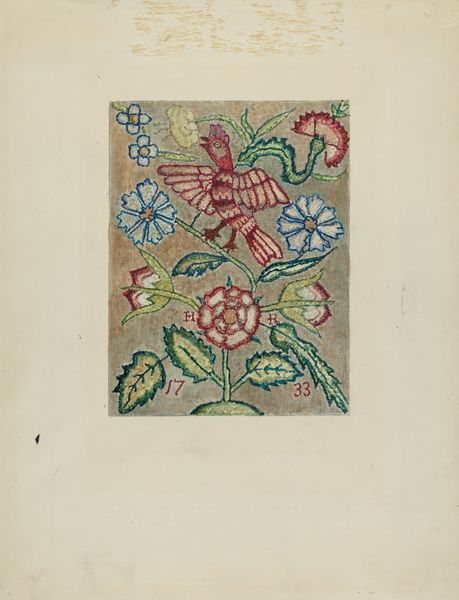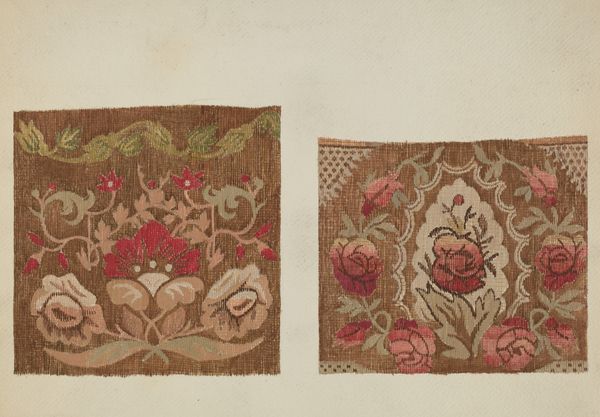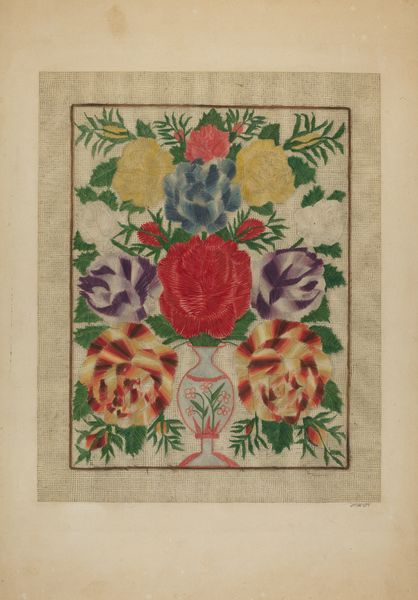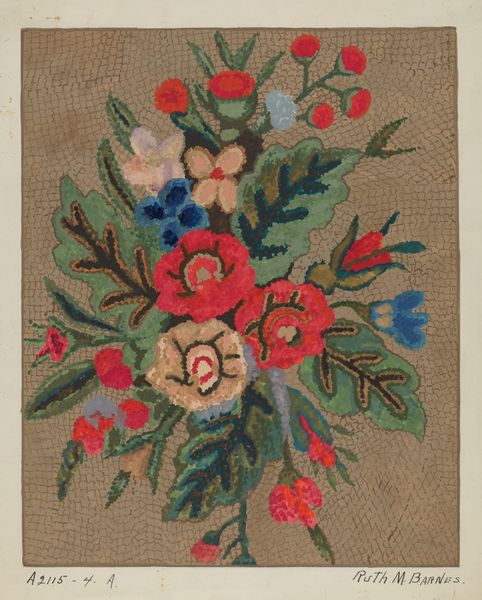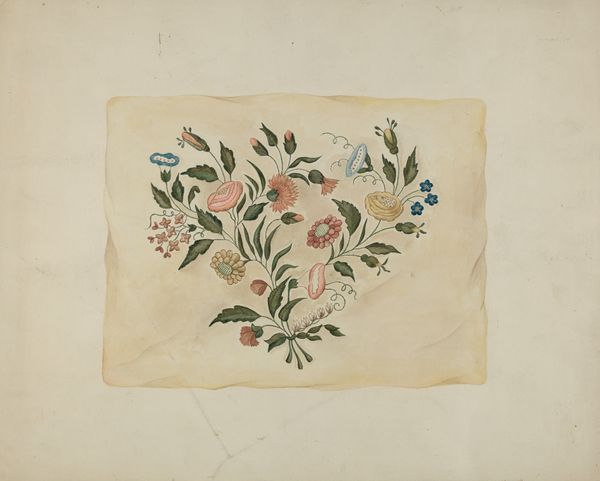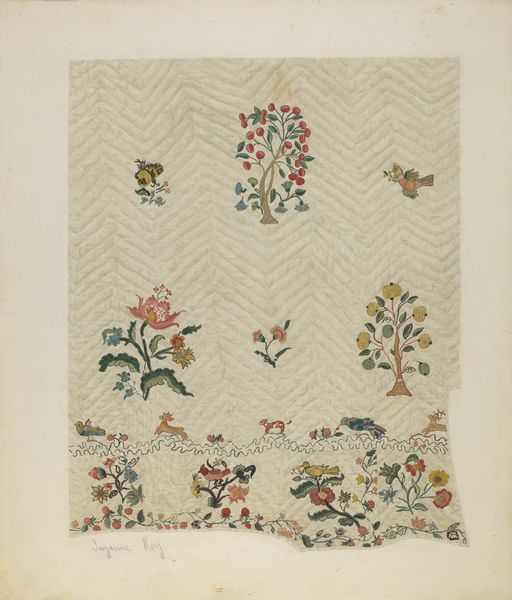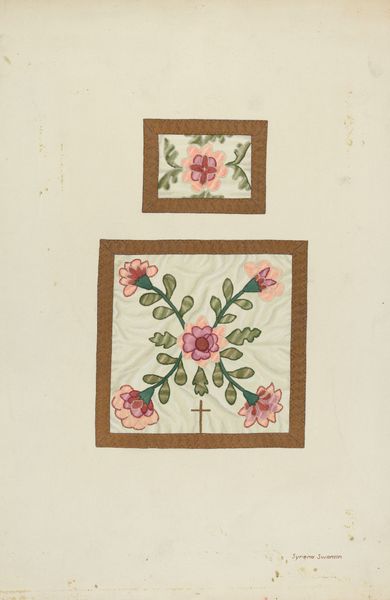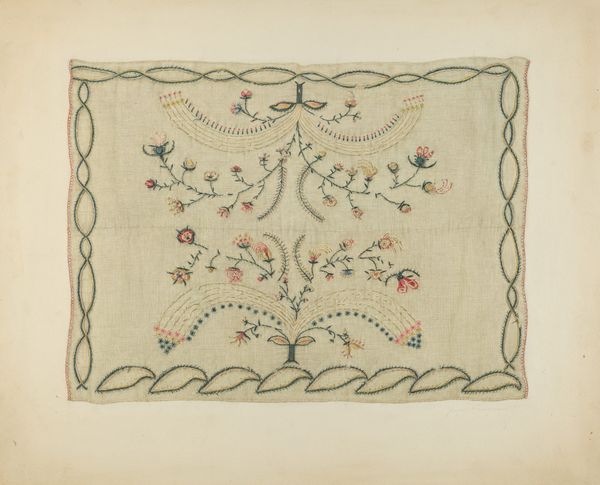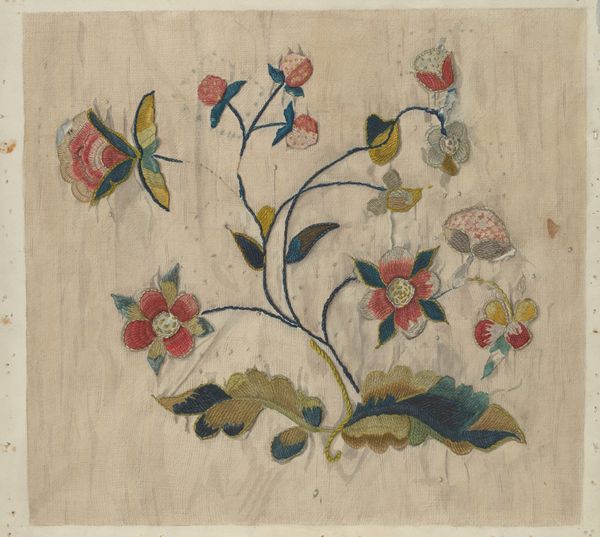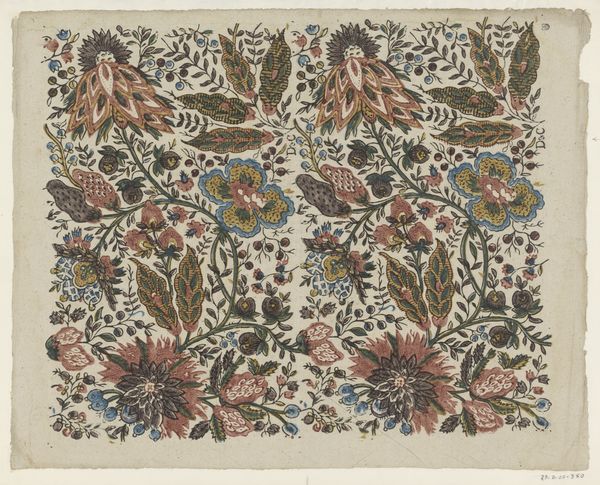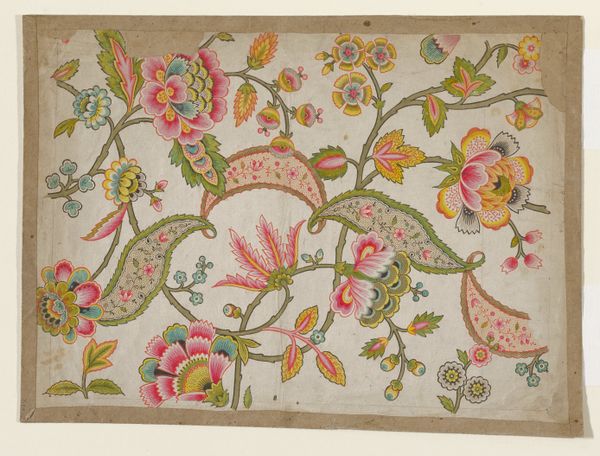
drawing, mixed-media, textile
#
portrait
#
drawing
#
mixed-media
#
textile
#
coloured pencil
#
folk-art
Dimensions: overall: 33.3 x 45.7 cm (13 1/8 x 18 in.)
Copyright: National Gallery of Art: CC0 1.0
Editor: Here we have “Sampler,” created around 1940 by Charles Roadman, using drawing and textile with mixed media. What strikes me is the sort of fragmented quality of the work. It looks like pieces of a much older textile. What’s your take? Curator: The fragmented nature is key. To understand this work, we must look at its materiality. The stitching, the canvas – these are remnants of women’s labor, domestic craft. Roadman is repurposing these traditional materials, perhaps commenting on their original context versus his own artistic labor. Who traditionally creates samplers, and what social structures support or constrain such creation? Editor: So, it's about the re-use of the craft itself as much as the finished work. Could it be arguing that "folk art" as it’s categorized is just repurposed "women's work" for consumption? Curator: Exactly! By isolating and framing these fragments, Roadman highlights the inherent value and skill within them. Is he elevating this anonymous needlework or critiquing the commodification of folk art? Does calling this work “drawing” reframe how we are to consider the textiles represented? Editor: I hadn't thought about that tension – elevating versus critiquing. Thinking about the '30s and '40s, I imagine the art world's view of textile arts was dismissive and gendered, looked down upon as something less than 'fine art.' Curator: Precisely. This challenges the perceived hierarchy between "high" art and craft. Think about the resources available for artistic production at the time, and for whom they were available. Consider also, for whom would artwork depicting embroidery patterns have resonance or economic potential? Editor: This piece makes me see textile art not just for its visual appeal but also for the story of labor it embodies. Curator: Indeed. We see how focusing on materials and context opens up deeper understandings of the artist's intent and the art's socio-historical significance.
Comments
No comments
Be the first to comment and join the conversation on the ultimate creative platform.

